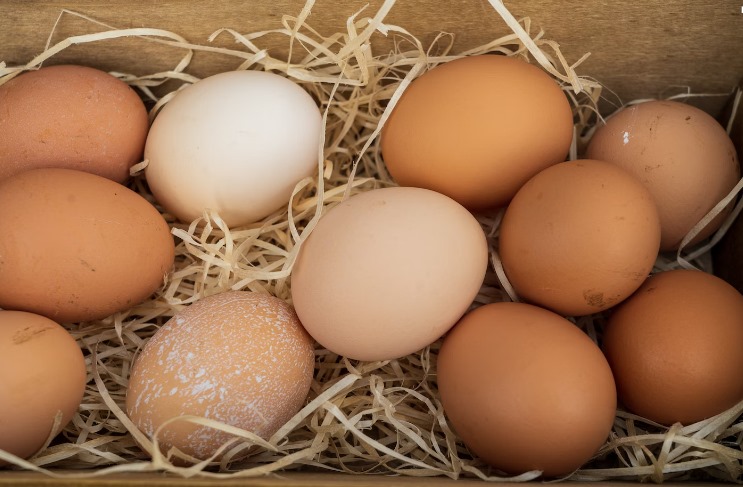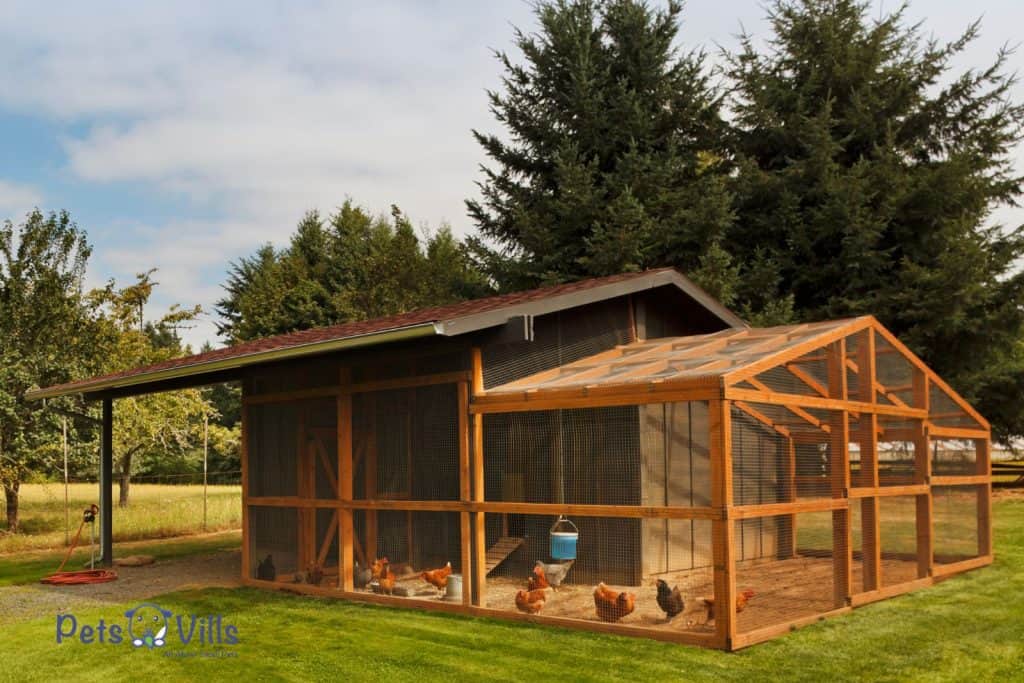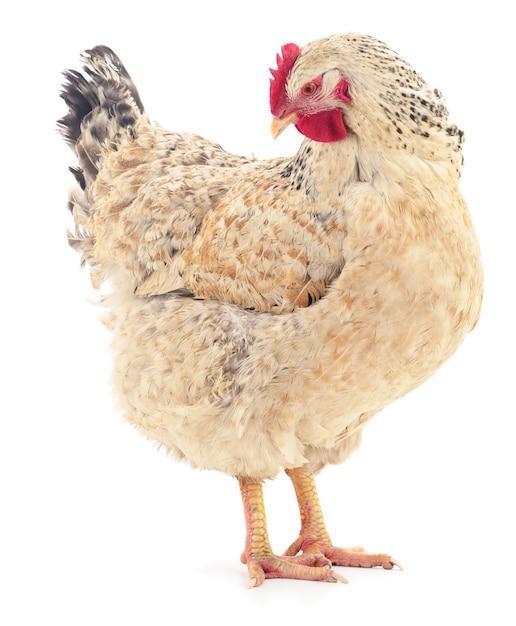Have you ever marveled at the vibrant hues of the rainbow and wished to see them mirrored in your backyard poultry?
Well, with the Dixie Rainbow Chicken, that dream is a lot closer than you might think.
With my extensive experience delving into various poultry breeds, I’ve cultivated a unique understanding of these rainbow chickens.
This article promises to unfold every feathered secret of this captivating breed. So, let’s embark on this colorful journey together.
Table of Contents
Dixie Rainbow Chickens: General Breed Characteristics
When we talk about Dixie Rainbow Chickens, there’s an array of attributes that set them apart. These aren’t just your regular backyard birds. Let’s explore the intricacies of their physicality, behavior, and diet, shedding light on what makes them so distinctive and desired.
Physical Traits
Every chicken breed has its signature, and the Dixie Rainbow is no exception. From a distance, their appearance might seem typical, but a closer look reveals the magic.
Unique Color Patterns
The name ‘Rainbow Chicken’ isn’t for show. These birds exhibit a myriad of colors, making each one distinctively individual. Their plumage ranges from hues of brown to gold, with splashes of white and black, truly mirroring a rainbow’s allure.
Size and Weight
When fully mature, these chickens present a sturdy physique. Typically, hens weigh around 5-6 lbs while roosters tip the scale at a robust 7-8 lbs, making them both mesmerizing and formidable in their stance.
Behavior and Personality
One might wonder, are these chickens just about the looks? Far from it! Their personality is as vibrant as their appearance.
Affection and Social Tendencies
Dixie Rainbow Chickens, often characterized by their affectionate nature, crave human interaction. Unlike some breeds that prefer keeping to themselves, these birds relish the companionship, often following their caretakers around the yard.
Noise Level and Vocalizations
While they are generally docile, their vocalizations can vary. They are known to have a moderate noise level, clucking and cooing, especially during their egg-laying period.
Diet and Feeding
Like all creatures, Dixie Rainbow Chickens have their dietary preferences, ensuring they flaunt that brilliant plumage and remain healthy.
What to Feed Your Dixie Rainbow Chicken
Offering a balanced diet is key. A mix of high-quality chicken feed, grains, and occasional treats like vegetables and fruits will keep them in top shape. Don’t forget clean water, is vital for their well-being.
How Often to Feed
These birds are voracious eaters. Ensuring a constant supply of feed throughout the day is recommended. While they’ll forage and scratch, supplementing with feed ensures they get the nutrition they need.
Lifespan and Maturity: How long do they live?
On average, with proper care, Dixie Rainbow Chickens can grace your backyard for 6-8 years. Their robust nature and adaptability play a significant role in their longevity. Reaching maturity at around 5-6 months, they are a delight from chick to elder.
The Origin Story: Where Do Dixie Rainbow Chickens Come From?
Dixie Rainbow Chickens aren’t just birds; they’re an amalgamation of poultry artistry.
Genetic Background
Rooted in diverse genetics, they were initially engineered for meat yield. Through thoughtful breeding, and merging genes from robust breeds, the Rainbow Chicken was born—efficient and stunning.
Geographical Origins
Originating in the southern U.S., particularly the Dixie region, their name pays homage. The region’s climate and terrain cultivated their adaptability, while their multi-hued beauty made them sought-after.
Dixie Rainbow Chickens and Egg Production
Egg production is a prime consideration for many poultry enthusiasts. With the Dixie Rainbow Chicken, you get a blend of quality and quantity, making them a prime choice for those seeking both beauty and bounty in their backyard.
Quality of Eggs
When considering the Rainbow Chicken breed, one can’t help but wonder about the caliber of eggs they produce.
Nutritional Value
Eggs from Dixie Rainbow Chickens are a nutritional powerhouse. Packed with proteins, essential vitamins, and minerals, they provide a wholesome meal. Their yolk often has a deep yellow hue, indicative of a rich diet and healthy living conditions.
What Color Eggs to Expect
With a name like Rainbow Dixie Chicken, it’s natural to ponder the color of their eggs.
Egg Color Variations
Contrary to what one might expect, the eggs of these Rainbow Chickens don’t mirror their vibrant plumage. Instead, they lay eggs in shades of light brown to creamy tan, each with its unique hue, adding a rustic touch to your egg basket.

Egg-Laying Frequency
For many, egg production is the crux of choosing a chicken breed.
Seasonal Factors Affecting Egg Production
Dixie Rainbow Chickens are consistent layers, often producing 4-5 eggs a week. However, like most chickens, their laying frequency can be influenced by seasonal changes. Longer daylight hours during summer often result in increased egg production.
Ideal Age for Egg-Laying
Most hens begin their egg-laying journey at the age of 5-6 months. However, for optimal egg production from your Dixie Rainbow Chickens, it’s crucial to provide them with a balanced diet and ideal living conditions.
Dixie Rainbow Chickens and Climate Adaptability
The Dixie Rainbow Chickens truly shine in adaptability, thriving from chilly norths to sunny souths. Their climate resilience makes them a top pick for poultry lovers.
Cold and Heat Tolerance
Cold or hot, Rainbow Dixie Chickens stand strong. Their thick feathers shield against cold, while innate temperature regulation combats heat.
Ideal Living Conditions
Despite toughness, optimal conditions elevate their well-being. Provide a well-aired coop, protection from extremes, and shaded spots.
Coop Requirements and Tips
Your Rainbow Chickens’ Haven: a spacious, predator-safe coop. Prioritize cleanliness, cozy bedding, and sturdy roosting bars for optimal Dixie Rainbow Chicken care.

Caring for Your Dixie Rainbow Chickens: Tips and Tricks
Owning a Dixie Rainbow Chicken is not just about admiring their beauty; it’s about ensuring they live their best lives. Providing the right care can keep these rainbow-colored wonders healthy, happy, and thriving in your backyard.
Health and Common Ailments
Like all poultry, Dixie Rainbow Chickens can encounter health challenges. Being vigilant and proactive is key.
Signs and Symptoms of Illness
Monitor your Rainbow Chickens for any unusual behavior. Lethargy, changes in appetite, difficulty in breathing, or a drop in egg production could be signs warranting attention. Early detection often leads to quicker recovery.
Vaccination and Medication Tips
Regular vaccinations against common poultry diseases and a deworming regimen can keep your Dixie Rainbow Chickens in prime health. Consult a vet for a tailored vaccination schedule.
Exercise and Play: Keeping Your Dixie Rainbow Chickens Happy
A contented chicken is an active one. Ensuring they have ample space to roam, forage, and play is vital for their well-being.
Toys and Activities
Believe it or not, Dixie Rainbow Chickens enjoy playtime. Offer them toys like pecking blocks, hanging treats, or even a simple mirror. These can stimulate their minds and keep them engaged.
Myth-Busting: Common Misconceptions about Dixie Rainbow Chickens
Every star has myths; Dixie Rainbow Chickens are no exception. Let’s clarify.
Are They Good for Meat?
Yes! Bred initially for meat, Dixie Rainbow Chickens deliver flavorful, tender cuts. They’re ideal meat birds due to their size and growth.
Can They Fly?
They’re no eagles, but yes, they flutter and soar in short spans. Ensure secure coops to avoid unscheduled escapades.
How Do They Get Along with Other Poultry?
Rainbow Chickens are friendly but monitor any new additions. Each bird is unique; aim for flock harmony.
Where to Buy Dixie Rainbow Chickens: A Buyer’s Guide
Considering Dixie Rainbow Chickens for your flock? Smart choice!
Hatcheries and Online Shops
Reputable hatcheries, many online, are prime sources for these chickens. Prioritize ones with strong reviews ensuring healthy chicks.
Price Range and Budgeting Tips
Dixie Rainbow Chicken costs fluctuate by age and source. Factor in feed, housing, and health expenses. Opt for quality, even if it means starting small.
Conclusion
The Dixie Rainbow Chicken is more than just a pretty face. From its adaptability across climates to its significant egg and meat production, it’s a breed that embodies versatility.
Whether you’re an experienced poultry keeper or a newbie starting your chicken journey, the rainbow hues and sterling qualities of this breed make it a brilliant addition to any backyard flock.
FAQs
Are Dixie Rainbow Chickens good for beginners?
Absolutely! Their hardy nature, coupled with their friendly temperament, makes them an ideal choice for those new to poultry keeping.
How do Dixie Rainbow Chickens behave with children and other pets?
Generally, they’re docile and get along well with children and other pets. However, always supervise interactions to ensure safety for all.
What type of coop is best for Dixie Rainbow Chickens?
A spacious, well-ventilated coop with secure roosting bars is ideal. Ensure it’s predator-proof and offers protection from harsh weather.
Are Dixie Rainbow Chickens noisy?
While they’re not the quietest breed, they’re not overly noisy either. Their vocalizations are typical of most chicken breeds.
What is the history of the Dixie Rainbow chicken breed?
The Dixie Rainbow Chicken was developed in the U.S., primarily for meat production. It’s a result of various crossbreedings, aiming to create a hardy bird that grows quickly while still retaining a beautiful appearance.
Alina Hartley is a small-town girl with a ginormous love of bearded dragons. It all started with Winchester, a baby bearded who was abandoned at the shelter by his former owners because of a birth defect that caused one front leg to be shorter than the other. Alina originally went to the shelter looking for a guinea pig, but one look at Winchester and it was love at first sight. From that day on, Alina has dedicated her life to learning everything she can about bearded dragons. She loves helping new beardie parents start their incredible journey with these magnificent reptiles.
Follow her on:
LINKEDIN
TWITTER.
Read her latest articles HERE
Learn more about her HERE.

